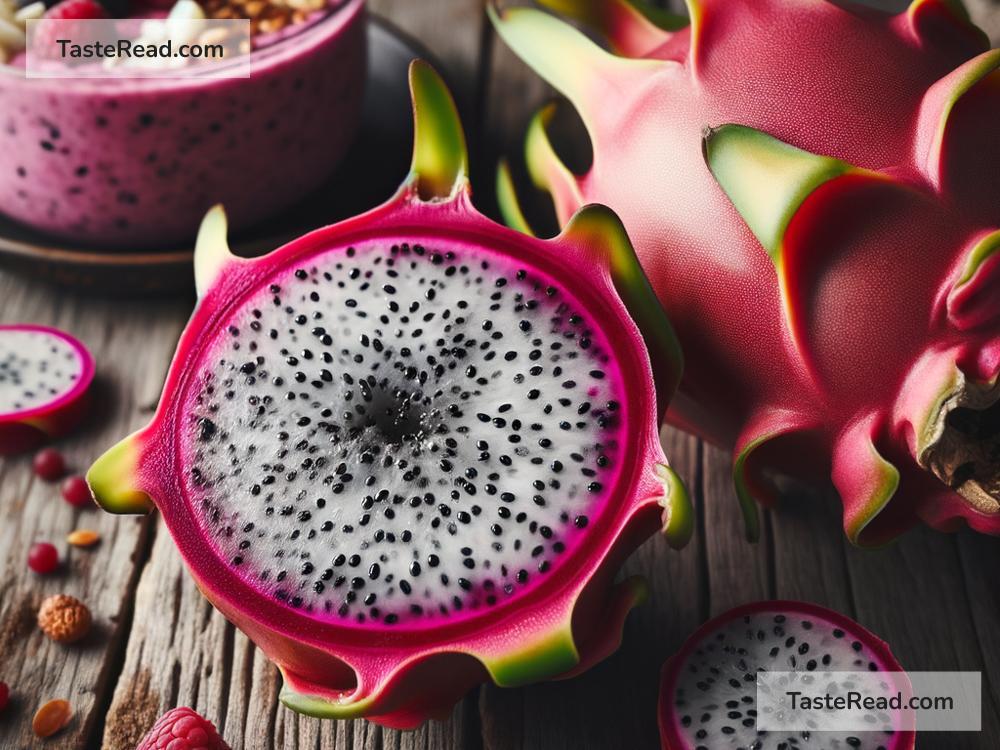How Dragon Fruit Became a Trendy Superfood
In the past decade, dragon fruit has soared from being a curious tropical fruit to a trendy superfood embraced by health enthusiasts worldwide. Its vibrant appearance, unique taste, and numerous health benefits have made this fruit a household name. But how did dragon fruit gain such fame and recognition? Let’s explore its journey to becoming a superfood sensation.
What Is Dragon Fruit?
Dragon fruit, also known as pitaya or pitahaya, is a fruit that grows on a type of cactus called Hylocereus. It is native to Central America but is widely cultivated in countries like Vietnam, Thailand, India, and Israel today. The fruit comes in three main varieties: pink skin with white flesh, pink skin with red flesh, and yellow skin with white flesh.
What makes dragon fruit stand out is its stunning appearance—it has vivid skin with green spiky scales, resembling a mythical dragon. The flesh inside is speckled with tiny black seeds, similar to kiwi, and has a mildly sweet taste with a slightly tangy edge.
The Rise in Popularity
Dragon fruit’s rise to fame wasn’t instant. It took a combination of factors, including globalization, growing health consciousness, and social media marketing, to transform this exotic fruit into a superfood phenomenon.
1. Globalization Introduced It to the World
Initially, dragon fruit was primarily consumed in its native regions of Central and South America, as well as Southeast Asia, where it is widely cultivated. However, as trade and travel expanded globally, more people were exposed to dragon fruit. The fruit made its way into supermarkets, restaurants, and smoothie bars in Europe, North America, and other parts of the world.
Its exotic appearance and unique flavor intrigued consumers, especially those looking for something fresh and unusual. Slowly but surely, dragon fruit began to gain recognition outside its native habitats.
2. A Healthy Lifestyle Movement Boosted Demand
In recent years, there has been a global shift toward healthier eating habits. People are actively seeking natural, nutrient-rich foods to nourish their bodies and improve their overall well-being. This trend created the perfect environment for dragon fruit’s rise in popularity.
Dragon fruit contains essential nutrients such as fiber, antioxidants, vitamin C, magnesium, and iron. Its antioxidants, including betalains, protect cells from damage and reduce inflammation, helping to lower the risk of chronic diseases. This appeal to health-conscious individuals helped dragon fruit earn its “superfood” status—foods that are highly nutritious and beneficial to health.
3. Social Media Made It Instagram-Worthy
Dragon fruit’s vivid pink and green colors made it a favorite for food photography, especially on social media. Platforms like Instagram and Pinterest are filled with pictures of smoothie bowls, fruit salad, and colorful drinks topped with dragon fruit slices. Chefs and food bloggers used dragon fruit’s bold appearance to create eye-catching dishes, emphasizing its visual appeal.
As more people saw dragon fruit featured in stunning food creations online, they became curious and motivated to try it themselves. Social media played a big role in making dragon fruit one of the most visually adored superfoods.
Why Is Dragon Fruit Trending Today?
Several factors have combined to keep dragon fruit in the spotlight.
1. Versatility in Recipes
Dragon fruit is incredibly versatile. It can be eaten fresh, blended into smoothies, added to fruit salads, or used in baked goods and desserts. Its mildly sweet flavor pairs well with a variety of ingredients, making it easy to incorporate into meals and snacks. Additionally, dragon fruit is often used in health-focused recipes, such as smoothie bowls and detox juices.
2. Superfood Benefits
Consumers are drawn to dragon fruit for its impressive health benefits. It’s low in calories but packed with nutrients, making it an ideal option for those trying to eat healthier or lose weight. Its high fiber content promotes good digestion, while its natural antioxidants help to boost immunity and overall health.
Moreover, dragon fruit is believed to help with skin health, due to its vitamin C, and is popular in beauty-conscious communities.
3. Exotic Appeal
In the era of globalization, people have more curiosity and access to foods from different cultures. Dragon fruit’s exotic origins and unique characteristics continue to fascinate consumers. Many people like to experiment with new flavors and enjoy fruits that come from far-off, tropical regions.
A Superfood With Staying Power
While food trends come and go, dragon fruit seems to have established itself as more than a passing fad. It has become a staple in grocery stores, health food shops, and restaurants. Its nutrient-rich profile, aesthetic appeal, and versatility ensure that it remains a favorite for years to come.
But on top of everything, dragon fruit reminds us how globalization and healthy living can turn an overlooked tropical fruit into a must-have superfood. Whether you’re blending it into your smoothie or enjoying it fresh, dragon fruit is undoubtedly one of the most exciting and beneficial fruits in the world today.
Conclusion
Dragon fruit’s journey to superfood status is a testament to how a combination of health trends, social media hype, and global curiosity can shape the way we eat. Its beauty, versatility, and health benefits make it a standout in the crowded world of superfoods. If you haven’t tried dragon fruit yet, now is the perfect time to taste and discover why this once-obscure fruit has become a modern favorite everywhere.


